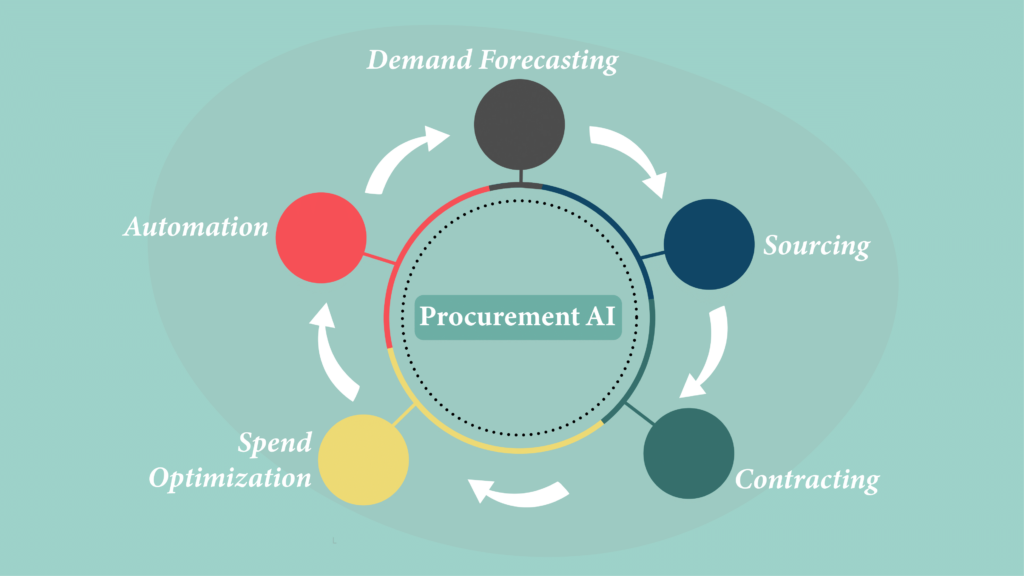The procurement cycle forms the backbone of how businesses source goods, evaluate suppliers, and manage complex supplier relationships.
Over the past two decades, procurement technology has evolved from email-based purchase orders and standalone tools to eProcurement software and integrated Procurement-as-a-Service platforms.
Earlier, technology had its limitations; so, many processes continued to be slow and manual even as businesses digitized their procurement cycles.
Now, AI is stepping in to bridge these gaps.
With its predictive and automation capabilities, AI brings both speed and transparency to the procurement cycle.
Automated Demand Forecasting
AI excels at crunching numbers; procurement AI can analyze historical data and market trends to make accurate predictions of future demand. Businesses can thus plan inventory levels with greater precision and avoid both shortages and excess stock.
Vertically trained procurement AI models, tailored for industries like hospitality, commercial real estate, construction, or retail, may also factor in seasonality, market shifts, weather conditions, and global events to forecast demand more accurately.
Improved forecasting due to reduced disconnects between supply chain stakeholders means fewer, unpleasant surprises and more streamlined procurement operations.
Smart, AI-Driven Sourcing
Manually processing RFPs, identifying suppliers, and analyzing bid sheets is time-consuming.
Evaluating supplier performance based on pricing terms, quality, delivery times, sustainability ratings, and risk metrics can take hours and even days.
In this stage of the procurement cycle, AI scours marketplace data and a multitude of other metrics to help buyers or procurement teams make smarter choices.
With a single source of truth and actionable insights available at the click of a button, businesses can maintain a resilient sourcing process. They can save both time and money, and maintain compliance, with confidence.
Automated Contracting
Natural language processing (NLP) tools can review and analyze supplier contracts. They can flag any discrepancies or risks, ensure compliance, and reduce legal exposure.
Cognitive computing with AI can quickly scan contracts to benchmark terms, understand exposure, highlight risks, automate renewals, and extract insights.
Approximately 80% of supplier data is unstructured, but AI can help stakeholders aggregate and analyze this data for better supplier risk management. According to Gartner, manual effort on contract review is expected to decrease by half by 2024.
Category-specific procurement chatbots can even handle autonomous negotiations in non-strategic areas. For example, Walmart uses AI chatbots that can engage with thousands of suppliers simultaneously.
Spend Analytics and Optimizations
AI in procurement can take spend analysis to a new level. For instance, Lilo’s AI engine examines spending patterns and identifies cost-saving opportunities by comparing data across thousands of suppliers, regions, and categories.
Procurement leaders can easily obtain data-driven recommendations on optimizations, like consolidating suppliers or renegotiating terms, to maximize value.
This granular analysis enables better budget management and strategic planning.
Automation of Repetitive Tasks
From reordering and supplier relationship management to inventory tracking and contract renewals, repetitive tasks can be a drain on resources.
Procurement AI automates these processes to reduce manual intervention and curb maverick spending.
For example, hospitality and commercial real estate businesses that use Lilo can automatically reorder stock when levels dip below a certain threshold.
Procurement AI can even manage supplier communications and contract renewals.
Today, many businesses are moving towards unified procurement platforms that facilitate autonomous procurement. Full integration in the source-to-settle workflow frees up the procurement team to focus on strategic initiatives.


